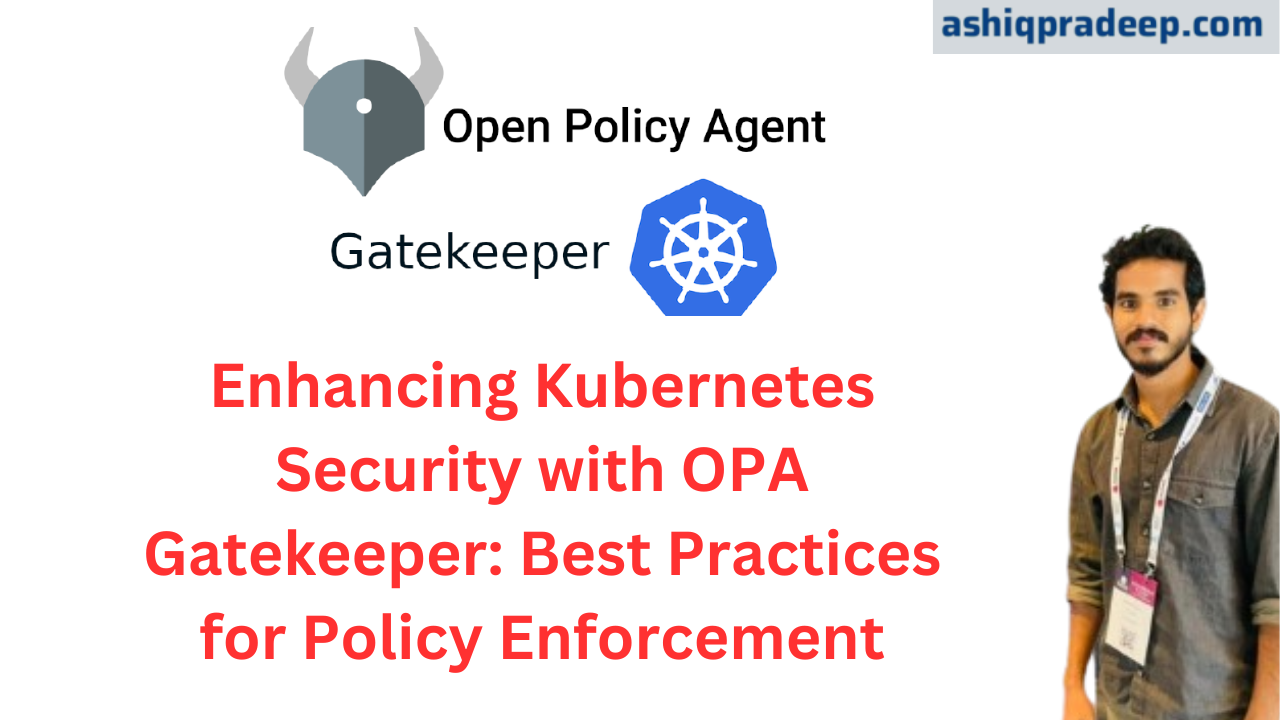Enhancing Kubernetes Security with OPA Gatekeeper: Best Practices for Policy Enforcement

Open Policy Agent (OPA) Gatekeeper is an essential tool for enforcing policies and enhancing security in Kubernetes clusters. It allows you to maintain compliance and best practices by ensuring that resources adhere to specified rules. In this blog, we will cover how to enforce memory limits on pods using OPA Gatekeeper.
Installing OPA Gatekeeper
To get started with OPA Gatekeeper, follow these installation steps:
Install Gatekeeper: Apply the official Gatekeeper manifest to deploy Gatekeeper and its Custom Resource Definitions (CRDs).
kubectl apply -f https://raw.githubusercontent.com/open-policy-agent/gatekeeper/release-3.11/deploy/gatekeeper.yaml
Verify Installation: Ensure that Gatekeeper is installed and running by checking the status of the gatekeeper-system namespace and its pods.
kubectl get pods -n gatekeeper-system
Policy: Enforcing Memory Limits on Pods
Objective
Ensure all containers within a Pod have specified memory limits to prevent resource exhaustion.
Why It Matters
Setting memory limits prevents individual containers from consuming excessive resources, which can degrade performance or cause outages for other applications.
Creating the Constraint Template
File: k8smemorylimits_template.yaml
apiVersion: templates.gatekeeper.sh/v1beta1
kind: ConstraintTemplate
metadata:
name: k8smemorylimits
spec:
crd:
spec:
names:
kind: K8sMemoryLimits
targets:
- target: admission.k8s.gatekeeper.sh
rego: |
package k8smemorylimits
violation[{"msg": msg}] {
input.review.kind.kind == "Pod"
containers := input.review.object.spec.containers[_]
not containers.resources.limits.memory
msg := "Memory limit is required for all containers"
}
Creating the Constraint
File: require_memory_limits.yaml
apiVersion: constraints.gatekeeper.sh/v1beta1
kind: K8sMemoryLimits
metadata:
name: require-memory-limits
spec:
match:
kinds:
- apiGroups: [""]
kinds: ["Pod"]
Applying the Policies
Create Constraint Templates
Apply the YAML file for the Constraint Template to define the policy structure.
kubectl apply -f k8smemorylimits_template.yaml
Create Constraints
Apply the YAML file for the Constraint to enforce the policy.
kubectl apply -f require_memory_limits.yaml
Example of Policy Enforcement Issue
Here’s an example of a Pod definition that would be rejected due to the applied policies:
apiVersion: v1
kind: Pod
metadata:
name: example-pod
spec:
containers:
- name: example-container
image: nginx
# Missing memory limits (violates the memory limits policy)
When attempting to create this Pod, OPA Gatekeeper will reject it with an error message indicating which policy violations occurred.
Correct YAML for Creating a Compliant Pod
Here is the correct YAML file for creating a Pod that will comply with the memory limits policy enforced by OPA Gatekeeper:
apiVersion: v1
kind: Pod
metadata:
name: compliant-pod
labels:
environment: production
spec:
containers:
- name: compliant-container
image: nginx
resources:
limits:
memory: "128Mi"
requests:
memory: "64Mi"
Additional Use Cases for OPA Gatekeeper
While memory limits are crucial, there are other policies you might consider implementing with OPA Gatekeeper.
Ensure that containers always pull the latest image version by setting imagePullPolicy to Always.
Prevent the use of hostPath volumes to avoid security risks associated with accessing the host filesystem.
Conclusion
OPA Gatekeeper helps enforce critical policies in your Kubernetes clusters, enhancing security and compliance. By implementing policies for memory limits and exploring additional use cases such as required labels, image pull policies, and disallowing host path volumes, you can ensure your Kubernetes environment adheres to best practices and organizational requirements.
This guide provides a foundation for using OPA Gatekeeper effectively. Implement these policies to enhance your Kubernetes security and compliance.